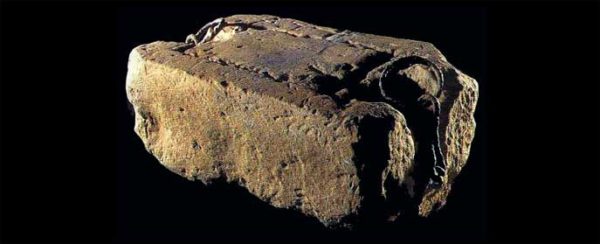Scone is best known for the Stone of Scone, also known as the Stone of Destiny or the Stone of Coronation. Less well known is that Scone was the primary ceremonial and legislative gathering place in Scotland. Recently, the results from extensive archaeological excavations were published.
The Stone of Scone is an oblong, red sandstone used as the Scottish coronation stone. Famously taken by Edward I of as part of the spoils of war and taken to Westminster. Although, the English promised to return the stone in 1328, it remained in England until 1950, when it was “stolen” from The Abbey and brought back to Scotland. Retrieved by the British Authorities, it was not until 1996 that the stone was formally returned to Scotland as a gesture of conciliation. It now resides at the castle in Edinburgh until the next British coronation. Whether or not this Stone of Scone is the original has been disputed for centuries. More interesting though, it seems, is to investigate the original setting of the stone at the centre of the ancient ceremonial assembly ground at Scone and compare the site with other similar assembly grounds.
The Royal Complex at Scone

Scone’s role as the premier site for royal investiture and legislative assemblies is well known. The earliest trusted record dates to AD 906, while the last state occasion took place in 1651.
At the centre of the complex is the Moothill Mound, the site of an Augustinian Abbey founded by Alexander I in c. 1120. The mound measures 90 x 64 metres and rises two metres above ground. It is located inside the Abbey grounds with the ruined church to the south. This measured c. 77 metres and was impressive enough to be used for the actual medieval unction and coronation ceremonies of kings and queens.
Excavations by Oliver O’Grady shows that Moothill, itself, was ditched. Radiocarbon dates from charcoal fragments found in the ditch dates the site to the 10thto 12thcenturies, thus generally confirming the written evidence, from the Chronicle of the Kings of Alba’ (dated to the 10thcentury.) As excavations in the mound itself has not been carried out the exact date cannot be fixed, but the possibility exists that the written record and the construction of the mound and the ditch surrounding it can be dated to c. AD 1000. “Whether in the tenth or eleventh century, the creation and augmentation of a monumental platform for high ceremonial and legislative assemblies was implicated in elite political strategies to elevate Scone as a royal centre”, writes O’Grady, who continues to describe how the place was used for legislative assemblies until the 15thcentury, when they were moved to more secure locations in the royal strongholds of Perth, Stirling, and Edinburgh.
The European Context
After the foundation of the Abbey in the 12thcentury, the meeting ground at Scone came to look much like the traditional idea of an “Aula Regia”, a space consisting of a royal chapel, a space dedicated to processions, and a proper meeting ground – whether inside a hall or outside on a mound. The O’Grady mentions similar places at Cordoba, Aachen, Westminster, Prague, Gamla Uppsala, Nidaros in Norway and Lund in Sweden. Others worthwhile exploring in detail would be Paderborn, the Saxon twin of Aachen, the somewhat later Goslar, and Jelling, with the last two dated to approximately to the same timeframe as the complex at Scone (the 10thand early 11thcentury).
Whether or not a church was erected at Scone at the beginning of the 10thcentury cannot be known without further excavations. It seems likely, though, that familiarity with the model as it derived from Trier via Aachen, was widespread in the 10thcentury and onwards, and that it likely inspired the construction of the assembly site at Scone.
The article is the first presentation of the extensive work by Olver O’Grady. In the bibliography we are promised a full publication.
SOURCE:
Accumulating Kingship: the archaeology of elite assembly in medieval Scotland
By Oliver J. T. O’Grady
In: World Archaeology
Published online: 12 Jul 2018
ABOUT THE AUTHOR:
Oliver J. T. O’Grady is a landscape archaeologist with expertise in the archaeology and history of medieval north-west Europe. His research focuses are the interdisciplinary study of medieval landscapes and elite central places, the material remains of medieval gathering practices and the political role of the medieval Church. His PhD was entitled ‘The Setting and Practice of Open-air Judicial Assemblies in Medieval Scotland’, which led to his role as Principal Investigator of field investigation projects at the royal centre and medieval inauguration site at Scone in Perthshire, Scotland (2005–2011). He currently works as a freelance independent researcher and archaeologist.
READ MORE:
He has worked in connection with the project: Debating the Thing in the North: the Assembly Project.
